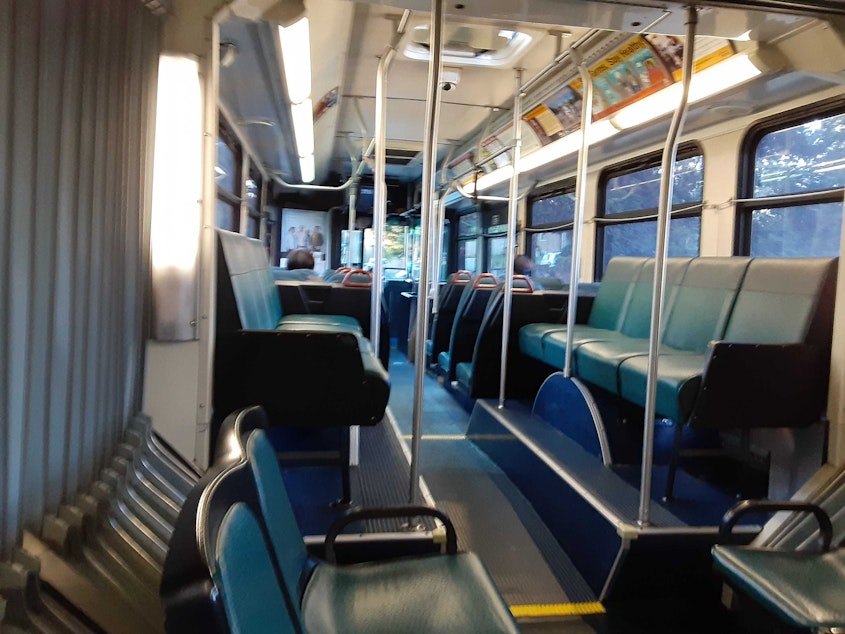Seattle cuts back on bus service starting today

Starting Monday, March 23 King County Metro bus routes are operating on a reduced service and others are completely gone.
Kierra Criss is a nurse at Harborview. She has to be there at 7 a.m. most days to start her 10 hour shift.
She typically takes the number 9 bus to First Hill. But Criss' bus line got completely removed amid the coronavirus outbreak and successive low rider turnout.
"It’s just another thing I have to worry about as we are working at the hospital," she says.
Her partner also works in healthcare. And while they actually have a car, street parking starts adding up.
"Either the city needs to figure out how to make parking free around First Hill for not only patients but health care workers, or come up with a shuttle service getting us to the hospitals."
On Saturday, Seattle announced it will temporarily suspend enforcement of the 72-hour parking rule, and it will limit the towing and booting of vehicles with unpaid parking tickets.
Rob Gannon, general manager of King County Metro Transit says it's a difficult balance they have to strike. Essential staff like nurses, janitors, and health care workers need to get to work, as does the general public who has to grocery shop or get to the pharmacy.
But ridership has already dropped by 60% on some routes. That’s a quarter million passengers no longer taking Metro.
The low turnout is partially good from a public health perspective because it means people are working from home and minimizing their social contact. It also means bus drivers interact with fewer customers and buses can be cleaned more regularly between routes.
Empty buses can't roam forever though. So they are moving to a new schedule for the time being.
Sean Hawks, also with King County Metro says, "We will try to go week-to-week and keep things as stable as possible, for as long as we can, until we see a path out of this entirely."
One small, silver lining is that Metro is not taking fares (again to minimize close contact). It's also asking people to take the back door instead.




